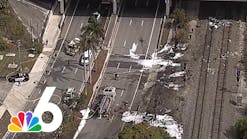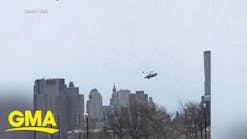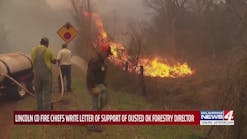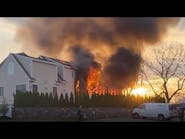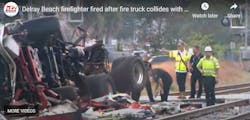This article is adapted from "Triangle: The Fire That Changed America," now available in paperback from Grove Press. Firehouse.com columnist Burt Clark says of "Triangle": "As a Firefighter you know what it is like to be in a fire but this book will let you know what it is like from the fire victim's point of view. Although this fire occured before any of us were riding fire trucks, the social, political, behavioral, and building conditions that led to this tragedy are still with us today."
On Saturday, March 25, 1911, a pedestrian near Washington Square in Manhattan saw smoke pouring from the upper windows of a 10-story factory building. He rushed to the nearest fire alarm box-Box 289-and pulled the lever. That's how the Fire Deparment of the City of New York learned of the deadliest skyscraper blaze the city's firefighters would face until the World Trade Center catastrophe more than 90 years later.
History knows it as the Triangle shirtwaist fire. It started about 4:40 p.m., just before quitting time, in a scrap bin at the Triangle Waist Company, New York's largest manufacturer of women's blouses. Occupying the top three floors of a building at the corner of Washington Place and Greene Street, the Triangle factory was crammed with highly flammable material: cotton fabric, tissue paper, wicker work-baskets and wooden tables and chairs. The blaze spread with amazing speed throughout the eighth floor and moved up through the airshaft to consume the ninth and tenth floors as well.
Within seconds of the first alarm, dispatcher Daniel Donahue relayed the call to companies throughout lower Manhattan. At least eight horse-drawn wagons responded immediately.
Engine Co. 72 arrived first, less than two minutes after the box was pulled. Battalion Chief Edward Worth reached the scene seconds later with Engine Co. 13. Worth saw that "the fire had entire possession of the eighth floor," he later recalled, and the ninth-floor windows "were full of people." He immediately used his key to enter a second alarm on Box 289, and then ordered his men to spray a light stream of water along the building's cornice, so that it would fall gently on the trapped workers and "cool [them] off."
As this was happening, Engine Co. 18 rolled up, with Captain Howard Ruch in command. The captain also saw the workers, screaming for help. One particular cry stood out in his memory: "I heard the shriek, and saw the people start to jump." Ruch and Worth ordered firefighters to man the life nets, but the force of bodies falling from a hundred feet rendered the nets useless.
Then as now, New Yorkers took great pride in their fire department, which they boasted was the best-equipped and best-trained force in the world. Chief Edward Croker, the man in charge, was perhaps the most respected public official in the city. And the FDNY performed well that day, bringing the inferno under control within 30 minutes of the first alarm.
But their best wasn't good enough. When Hook and Ladder No. 20 reached the scene, fireman Jacob Woll Jr. quickly cranked the gears on the tallest ladder in the city. Thousands of onlookers, streaming to the the awful spectacle, watched with hope as the ladder rose. Then it stopped, fully extended, at the sixth floor, some thirty feet below the trapped workers.
The flames were so intense on the eighth floor that they drove Ruch to his belly when he reached the landing. He decided he must get that blaze under control before heading up to the trapped workers above. Otherwise, he and his men would be cut off.
The ninth-floor workers-some 250 people, mostly young women and girls-were on their own. Flames quickly blocked one stairway. A flimsy fire escape in the rear airshaft became overcrowded and collapsed. Many escaped in the passenger elevators,but those, too, were soon cut off by the fire. And the door to the second stairway, the final exit, was locked. The factory owners wanted all workers to leave through a single door, where they were searched for pilfered garments.
One hundred and forty-six workers died in the Triangle fire. More than fifty of them jumped or fell in plain view of the throng on the street.
"I have long expected to see a fire such as this," Chief Croker told reporters after surveying the scene. In fact, he had prediced a high-rise fire just four months earlier. The problem was simple, as Croker saw it: The buildings were too tall and too many people worked in them, with scant provision for their safety. If anyone was to blame it was the city building department, for failing to insist on adequate safety measures in the new high-rises.
But there was a deeper problem with New York's approach to fire safety. By 1911, fire-safe factories had been a reality in parts of the United States for decades. As early as 1835, in an effort to lower their insurance costs, mill owners in New England had sponsored the development of fire walls, fire doors, sprinkler systems and more.
A survey of hundreds of New York factories, however, found just one that was equipped with sprinklers in 1911. Why? In part because city codes were influenced by the politically connected insurance brokers, who earned a commision based on the price of each policy they sold. In other words, they made more money on policies they sold to unsafe factories, because they could charge higher premiums.
The Triangle fire marked a turning point for the Democratic political machine that controlled New York City, called Tammany Hall. Threatened with the loss of working class votes, Tammany bosses seized on the tragedy to take the lead in delivering safer factory conditions. By 1913, more than two dozen new laws had passed the state legislature, requiring automatic sprinklers in New York high-rises, fire drills in large shops and unlocked, outward-swinging factory doors. Other laws enhanced protections for women and children on the job.
The reforms were hugely popular and catapulted a key Tammany man, Alfred E. Smith, to the governor's office and national prominence. Smith in turn set the agenda that his fellow New York Democrat, Franklin D. Roosevelt, took to the White House in 1932. These reforms came to be known as the New Deal.
In a sense, every time a retiree cashes a Social Security check, or a worker exercizes the right to unionize, or a family pays the rent with unemployment insurance, they are seeing the legacy of the Triangle fire. That 30-minute blaze was the fire that changed America.
Related:
- Buy It Today: Triangle: The Fire That Changed America

